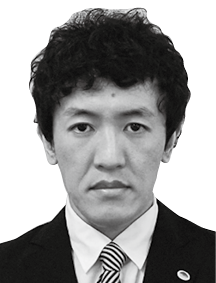While elevators and escalators have in the past been treated as standalone items of equipment, the requirement in the future will be for solutions that ease the movement of people from building entrance all the way to the desk where they work. Having targeted its Human Friendly development concept for elevator and escalator products and services, Hitachi’s objective is to enable people to get to where they need to go without having to think about it. The FI-700 elevator management system with human flow prediction developed on the basis of this concept helps add value to buildings, improving user satisfaction through human-friendly operation.





FI-700 is a next-generation elevator management system featuring human flow prediction that was developed with the aim of “providing ways to move around buildings in comfort that blend seamlessly into people’s activities.”
It uses artificial intelligence (AI) to analyze large amounts of historic data on things like passenger numbers and when elevators are called from each floor at different times of the day, using this to achieve efficient operation by, for example, predicting elevator user numbers and prioritizing the allocation of cars to floors where large numbers of people are likely to be waiting.
The system offers a variety of operating modes to provide building users with a comfortable environment for moving around. These include an automatic calling mode that sends cars to the ground floor where user numbers are likely to be high at times such as the morning rush and a mode for bypassing floors where an elevator has been requested if the car is already close to being full (determined by means such as an in-car camera). It also helps add value to buildings by exchanging data with other on-site systems, such as utilizing foot traffic data from sources such as surveillance cameras to make movement in the building more comfortable. This article describes the features and functions of the FI-700 system.
Hitachi is shifting away from its past focus on elevator cars and their efficiency of operation, focusing instead on “human flow,” which aims to smooth the movement of people through buildings (see Figure 1).
The FI-700 system is intended to “provide ways to move around buildings in comfort that blend seamlessly into people’s activities,” which it does by making this human flow both smart and connected (see Figure 2).
Along with addressing the problem of long waiting times during busy periods that is the top priority for elevator operation, FI-700 also avoids stressing users during non-busy periods by operating elevators on the basis of predicted human flow.
Fig. 3—Human Flow Prediction Process
 The system has succeeded in reducing average waiting times by up to 20% compared to previous systems during busy periods such as lunch breaks by using artificial intelligence (AI) to predict the number of elevator users (human flow) on the basis of large amounts of historic data on elevator operation.
The system has succeeded in reducing average waiting times by up to 20% compared to previous systems during busy periods such as lunch breaks by using artificial intelligence (AI) to predict the number of elevator users (human flow) on the basis of large amounts of historic data on elevator operation.
The top operational priority is to shorten waiting times and prevent situations where people have to wait a long time for an elevator. Hitachi has considerable experience with the development of control algorithms aimed at overcoming this problem.
With FI-700, the focus has shifted toward the use of predictive control. This involves using historic data to predict when people will press the elevator button and how many people will be waiting, and providing elevator cars accordingly. This minimizes the incidence of long waiting times and reduces these times by up to 20%*1 compared to previous systems*2 (see Figure 3).
One example is that elevators in the past have been slow to identify busy times, resulting in a delay in making elevators available pre-emptively. In contrast, the FI-700 system uses human flow prediction to predict future usage and provides elevator cars accordingly, thereby ensuring that elevator availability matches actual use (see Figure 4).
Along with the use of human flow predictions to improve the efficiency of the elevator service, this also enables smart elevator operation based on people’s behavior.
Fig. 4—Demand Prediction Through Application of Machine Learning to Elevator Operation Records
 A machine learning method was adopted to overcome the problem of slow response to sudden changes in demand that was an issue with past demand prediction methods that used load leveling. This predictive method is able to assess the volume of traffic, including times of particularly high or low usage, by learning the patterns of changing demand from several months of elevator operation records and using this to create a predictive model for user numbers.
A machine learning method was adopted to overcome the problem of slow response to sudden changes in demand that was an issue with past demand prediction methods that used load leveling. This predictive method is able to assess the volume of traffic, including times of particularly high or low usage, by learning the patterns of changing demand from several months of elevator operation records and using this to create a predictive model for user numbers.
FI-700 offers a variety of operating modes based on user needs to provide smart building access, including modes for bypassing floors when an elevator car is deemed to be full, automatically calling elevators, and preventing congestion (see Figure 5). By analyzing images from elevator hall surveillance cameras and other such sources and supplying elevators with information about the number of people waiting, these modes enable the elevator service to operate in an optimal manner based on the movement of people around the building.
Fig. 5—Smart Operation Using FI-700
 FI-700 offers a variety of operating modes based on user needs to provide smart building access, including modes for bypassing floors when an elevator car is deemed to be full, automatically calling elevators, and preventing congestion.
FI-700 offers a variety of operating modes based on user needs to provide smart building access, including modes for bypassing floors when an elevator car is deemed to be full, automatically calling elevators, and preventing congestion.
The main smart operation features provided by FI-700 are as follows.
Fig. 6—FI-700 Expansion Capabilities
 FI-700 is equipped with interfaces that can be used to receive information from external sources or provide details of elevator operation.
FI-700 is equipped with interfaces that can be used to receive information from external sources or provide details of elevator operation.
FI-700 is equipped with interfaces that can be used to receive information from external sources or provide details of elevator operation. For example, elevators can be dispatched in a timely manner by providing FI-700 with information on user numbers acquired by the detection and analysis of people by surveillance cameras located in the elevator car or hall. Another possibility is to output details of elevator movements in order to provide displays showing information such as waiting time or which car will be the next to arrive. This feature makes FI-700 a flexible and expandable system (see Figure 6).
Figure 7 shows an example where information on user numbers acquired by the detection and analysis of people by surveillance cameras located in the elevator hall is input to FI-700. While providing elevator cars at regular intervals is the primary task of the management system, there are also other modes of operation such as temporarily breaking formation to dispatch multiple cars at a time to service large numbers of waiting users, returning to regular-interval operation as quickly as possible after the backlog has been cleared.
Fig. 7—Example of Operation Coordinated with Data from Elevator Hall Surveillance Cameras
 While providing elevator cars at regular intervals is the primary objective, the system can also temporarily break formation and dispatch multiple cars to service large numbers of waiting users.
While providing elevator cars at regular intervals is the primary objective, the system can also temporarily break formation and dispatch multiple cars to service large numbers of waiting users.
Hitachi engages in collaborative creation whereby it works in partnership with customers to identify challenges and create new services. FI-700 is equipped with interfaces that allow for expansion and provide the flexibility to interconnect with other building systems, the objective being to improve services by using collaborative creation to meet user needs. The accuracy of human flow prediction can be improved by integrating operation with surveillance cameras located in the elevator cars or halls, for example, and the system has the potential to deliver new building-wide mobility solutions through interoperation with security gates, signage, air conditioning, and lighting systems (see Figure 8).
Fig. 8—Building Access Solutions Created Through Collaborative Creation
 By equipping FI-700 with interfaces that allow for expansion and provide the flexibility to interconnect with other building systems, Hitachi is seeking to improve services by using collaborative creation to meet user needs.
By equipping FI-700 with interfaces that allow for expansion and provide the flexibility to interconnect with other building systems, Hitachi is seeking to improve services by using collaborative creation to meet user needs.
This article has described the FI-700 elevator management system with human flow prediction that shifts away from the past emphasis on elevator cars and their efficiency of operation, focusing instead on “human flow,” which aims to smooth the movement of people through buildings. The purpose of this is to “provide ways to move around buildings in comfort that blend seamlessly into people’s activities.”
The system has succeeded in reducing average waiting times by up to 20% compared to previous systems during busy periods such as lunch breaks by using AI to predict the number of elevator users (human flow) on the basis of large amounts of historic data on elevator operation. In the future, Hitachi intends to continue pursuing innovation in building access through collaborative creation with customers and by utilizing the exchange of data with other building systems such as surveillance cameras.